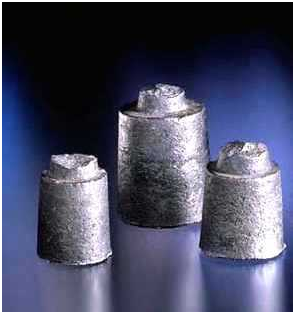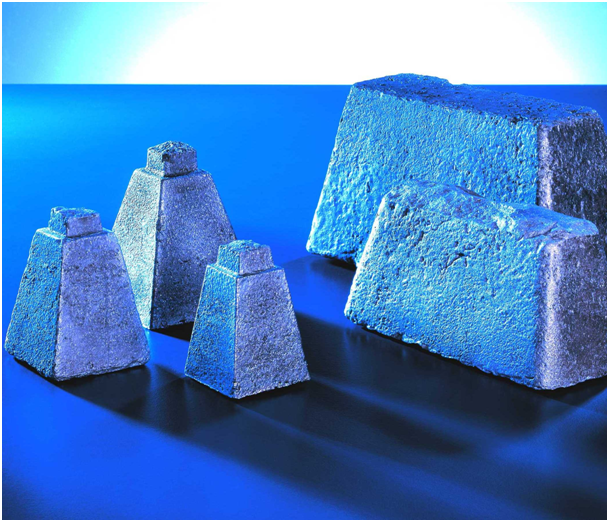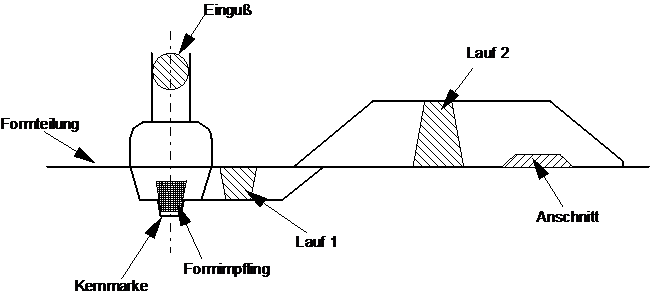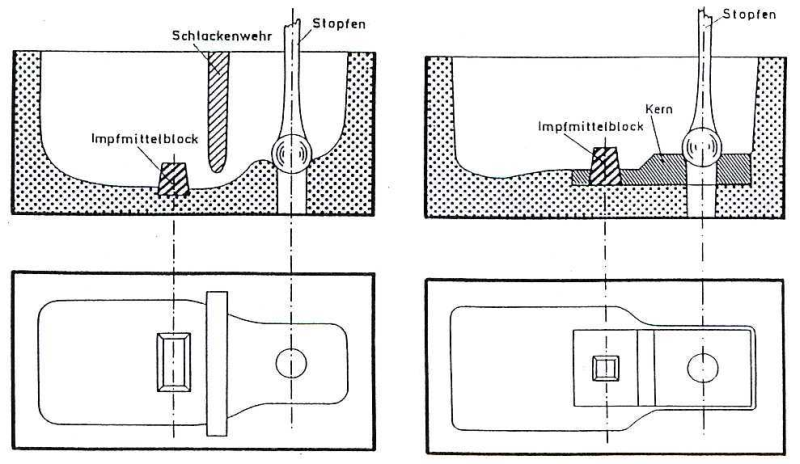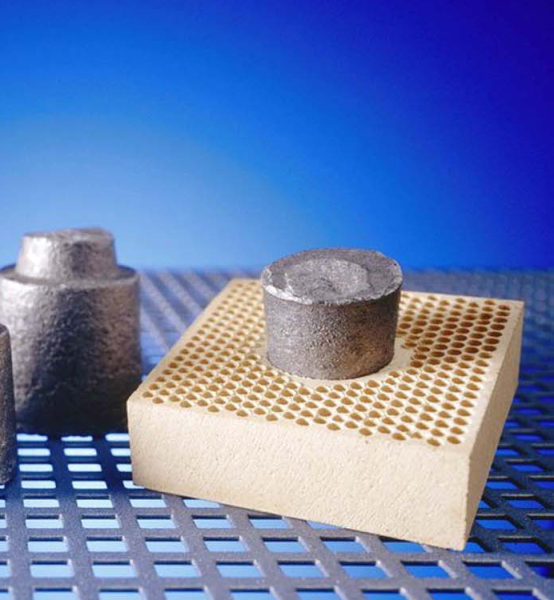Mold inoculation

Addition of substances with an effect on nucleation to the melt directly in the mold in order to influence the solidification behavior and structure formation in the as-cast condition in a targeted manner.
Usually, so-called in-mold inoculants are used for machine mold casting (Fig. 1, ASK Chemicals Metallurgy GmbH) and inoculant blocks (Fig. 2, ASK Chemicals Metallurgy GmbH) for hand mold casting. Fig. 3 (ASK Chemicals Metallurgy GmbH) shows in-mold inoculants and their application in the downsprue system, Fig. 4 (ASK Chemicals Metallurgy GmbH) shows inoculant blocks and their possible integration into the casting vessel (see also Downsprue).
The raw molds are selected on the basis of the dissolution time of the raw molds, casting time (see Casting time diagram) and casting weight. Mold inoculation means an optimum late inoculation “without” any noticeable fading effect. It can be used for small, thin-walled components as well as for the hand mold casting of castings of more than 200t.
In addition to the use in core prints, particularly formed in-mold inoculants are available for insertion in front of or on casting filters. A special kind of an inoculant/filter combination is the so-called combination filter where the inoculant is integrated into a filter (Fig. 5).
The benefits of mold inoculation can be summarized as follows:
- The inoculant amount is rather precisely adjusted to the casting mass.
- The fading effect of the inoculation is practically zero.
- The dissolution of the inoculant takes place in the absence of air.
- The inoculation increases the number of graphite nodules or, with flake graphite cast iron, promotes a fine A graphite formation.
- The production of GJS-400 or GJS-400-18 LT/RT in the as-cast condition is possible thanks to an increased number of nodules and a higher ferrite fraction (heat treatment can be omitted).
- The inoculation counteracts the formation of segregation.
Additional references:
Inoculation wire
Inoculation body
Inoculant inclusions
Long-term inoculant
Magnesium fading
